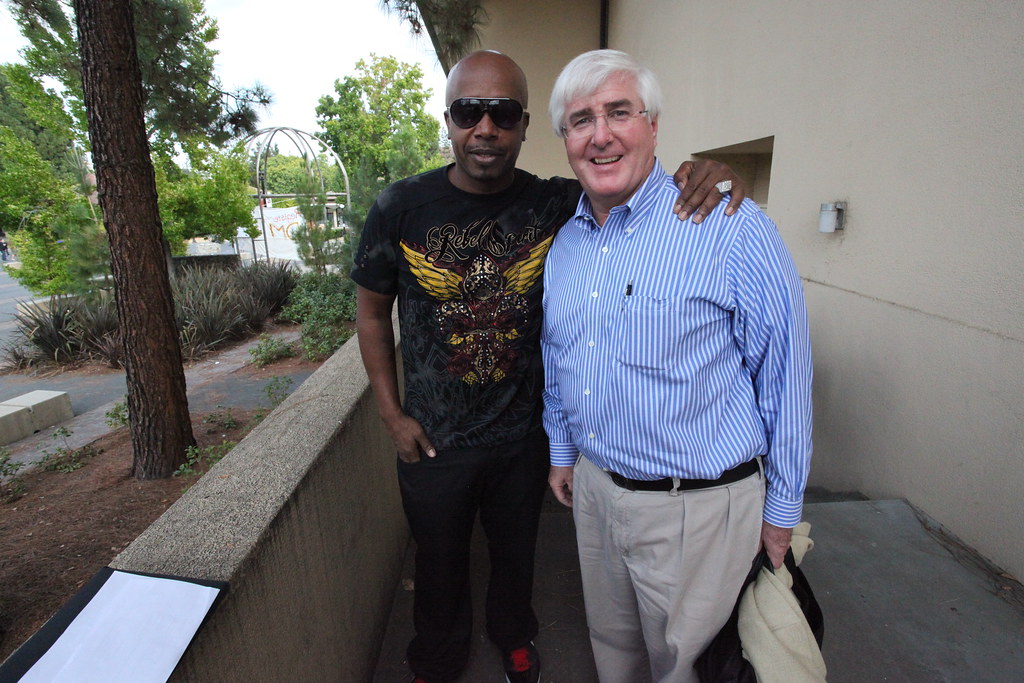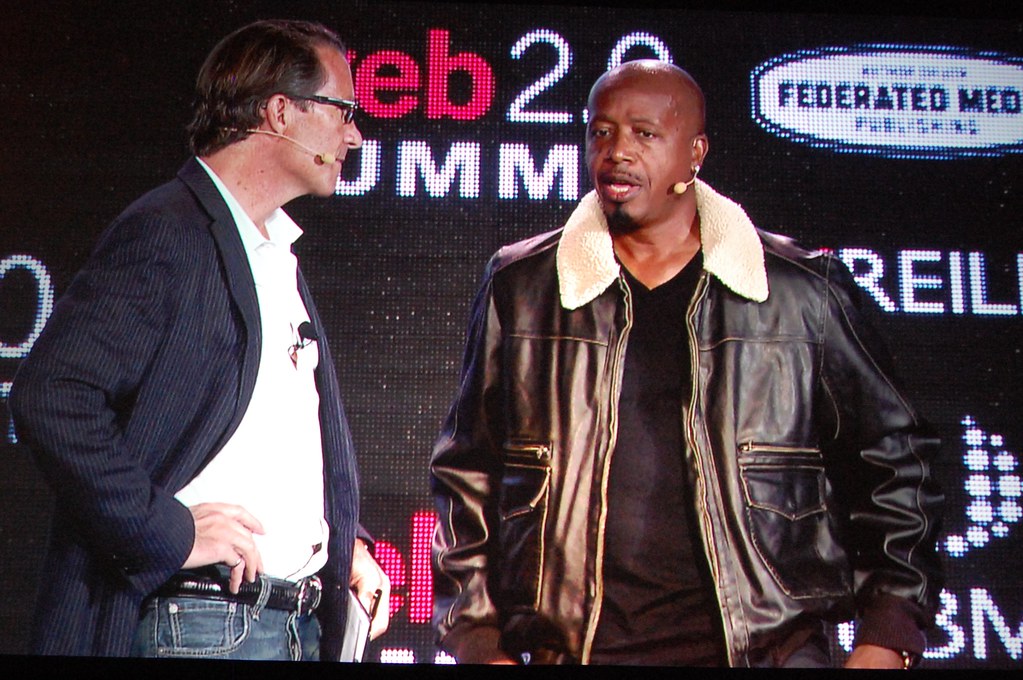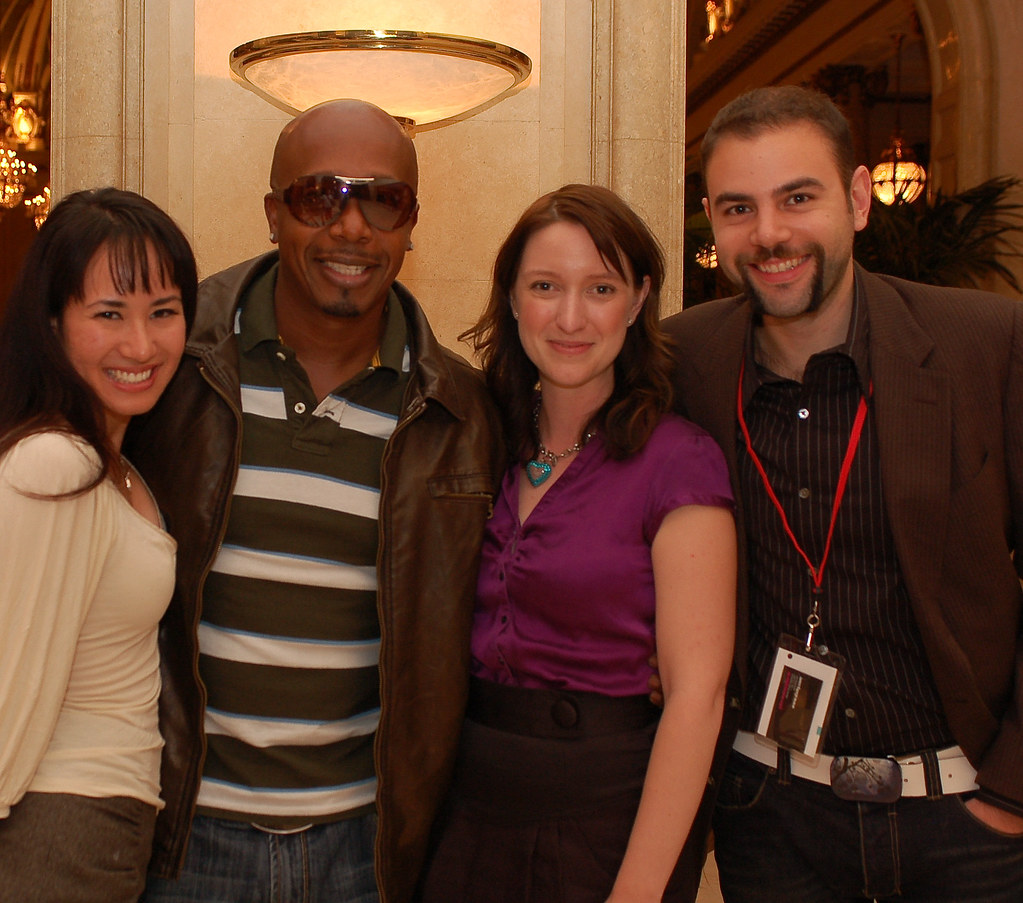In the late 1980s and early 1990s, Stanley Kirk Burrell, better known as MC Hammer, wasn’t just a rapper; he was a cultural phenomenon. His high-energy beats, flashy dance moves, and iconic parachute pants, coupled with chart-topping hits like “U Can’t Touch This” and “2 Legit 2 Quit,” propelled him to an estimated $70 million fortune at the height of his fame. He became a global brand, dominating commercials, sports arenas, and even inspiring fashion trends, securing his place as the first hip-hop artist to achieve diamond certification for an album that sold over 10 million copies.
Yet, this meteoric rise was shockingly matched by an equally swift and devastating fall. Just five years after reaching the pinnacle of success and amassing an annual income of $30 million, MC Hammer declared bankruptcy in 1996, drowning under $13 million in debt. This stark contrast between immense wealth and financial ruin serves as a potent reminder that a high income doesn’t automatically equate to financial security, a truth many celebrities and individuals face.
His story, though seemingly a ‘celebrity problem,’ offers universal and actionable insights into personal finance, applicable whether you’re managing millions or a modest paycheck. In this in-depth analysis, we will meticulously unpack the specific financial missteps that led to MC Hammer’s downfall, drawing critical lessons that can help anyone navigate their own financial journey with greater foresight and wisdom. This detailed examination aims to provide clear, concise, and factual information, much like the case studies often presented by Business Insider, illustrating larger financial trends through a real-world example.

1. **The $12 Million Mansion and Astronomical Maintenance**One of the most glaring symbols of MC Hammer’s opulent lifestyle was his sprawling 40,000-square-foot mansion in Fremont, California. This extravagant property, which he initially purchased for $12 million, quickly became a bottomless pit of expenses. He spared no cost in customizing it to his taste, adding gold-plated front gates inscribed with “Hammer Time,” a state-of-the-art recording studio, and a luxurious pool shaped like his signature pants.
Beyond the initial purchase, the rapper reportedly invested more than $30 million in improvements alone, transforming it into a veritable kingdom. The estate boasted an indoor and outdoor pool, complete with three waterfalls, a bowling alley, tennis courts, a 17-car garage, and even gold toilets. Such features, while impressive, demanded continuous, high-cost maintenance, contributing significantly to his burgeoning expenses without any corresponding long-term financial strategy.
Maintaining this dream home came with astronomical costs that simply did not stop after the initial purchase and elaborate renovations. The property’s upkeep alone cost $500,000 annually, with some reports indicating that the staff required for the property’s management pushed monthly costs to between $500,000 and $1 million. This illustrates a severe case of lifestyle creep, where fixed costs escalated far beyond sustainable levels, even for someone earning millions of dollars a year.
In a candid admission, MC Hammer himself acknowledged the sheer excess, revealing, “I’ve only used the marble steam room in my bathroom once and I’ve probably never even sat on the couch in the living room.” This statement powerfully underscores the disconnect between acquiring lavish assets and their actual utility or necessity. The mansion became a monument to unchecked spending rather than a wisely managed asset, draining his fortune relentlessly.
His choice to invest so heavily in a single, illiquid asset with such immense ongoing costs stood in stark contrast to sound financial planning. It highlights the critical importance of understanding not just the purchase price, but the true cost of ownership and the financial commitments that come with a certain lifestyle, a lesson that would prove incredibly costly.

2. **The 200-Person Entourage and Sky-High Payroll**Beyond his lavish personal property, MC Hammer’s generosity, or perhaps his inability to say no, led to another colossal financial drain: an enormous payroll for his entourage. By various estimates, he employed over 200 friends and family members, creating a vast network of dependents. While some roles, such as bodyguards, dancers, and assistants, were clearly defined, many others had vague responsibilities that were never adequately justified.
This massive support team came with equally massive salaries. While a degree of support is often necessary for high-profile individuals, Hammer’s payroll quickly spiraled out of control. His commitment to providing for his inner circle stemmed, in part, from a deep sense of loyalty, a noble sentiment that unfortunately translated into financially unsustainable practices without proper vetting or limits.
The financial implications were staggering. At times, MC Hammer’s payroll reached an astounding “a million dollars a month.” This figure alone represented an unsustainable outflow of cash, dwarfing even the impressive earnings he was bringing in during his peak. Such a substantial fixed expense meant that even slight dips in income would immediately plunge him into financial distress.
For many, this level of employment might seem unimaginable, but within the bubble of constant touring and fame, such expenditures can start to feel necessary. Yet, the reality is that providing for so many people, especially when many roles are nebulous, is a direct assault on long-term wealth building, leaving little room for savings or wise investments. The loyalty, while commendable, ultimately contributed to his downfall.
This mistake underscores a crucial lesson in personal finance: while supporting loved ones is admirable, it must be balanced with one’s own financial security. Unchecked generosity, especially when uncoupled with strategic planning, can quickly erode even the most substantial fortunes, turning a source of support into a source of immense debt.

3. **Lavish Spending on Luxury Assets**MC Hammer’s spending habits extended far beyond his mansion and payroll, encompassing a wide array of luxury assets that collectively drained his fortune. His penchant for extravagance was evident in his “expensive shopping sprees” for wardrobe, jewelry, and custom designer outfits, which became legendary. These were not mere purchases but symbols of his status, continually refreshed at great cost.
His collection of luxury vehicles was equally extensive and costly. He amassed “nearly 20 luxury cars,” each representing a significant capital outlay and ongoing expenses for maintenance, insurance, and storage. These high-value depreciating assets quickly lost value, providing little to no return on investment while constantly demanding financial upkeep.
Further exemplifying his taste for the opulent, Hammer also invested in a “private jet, and helicopters.” These modes of transport, while offering unparalleled convenience, come with exorbitant operational and maintenance costs, far exceeding their initial purchase price. The continuous expenditure on these items became a constant hemorrhage of funds, accelerating his financial decline during quieter periods.
Perhaps one of the most unique and expensive of his acquisitions was his passion for racehorses. He owned “21 racehorses,” some of which were “valued at $1 million” each. Racehorses are not merely purchases; they are ongoing investments requiring significant upkeep, including stabling, feeding, training, and veterinary care. This venture, while potentially lucrative, is notoriously risky and served as yet another substantial drain on his cash flow.
This pattern of acquiring numerous high-value, high-maintenance luxury items showcased a mindset focused on immediate gratification and the outward display of wealth rather than prudent financial management. The collective weight of these depreciating assets, coupled with their associated running costs, became a monumental burden that even a $70 million fortune couldn’t sustain for long.
Read more about: $200 Million Mistake: The 15 Financial Decisions That Sank Iconic Celebrities’ Fortunes
4. **The Peril of Lifestyle Creep**MC Hammer’s story serves as a quintessential example of “lifestyle creep,” a financial phenomenon where, as income grows, so do expenses, often subconsciously. This insidious trap is universal, affecting individuals at all income levels, proving that “when you make millions of dollars a year, it doesn’t mean you’re financially set.” For Hammer, his meteoric rise brought with it an immediate and substantial upgrade in living standards, which quickly became entrenched.
His success led to a lifestyle that, while initially exhilarating, proved incredibly “difficult to sustain.” The increase in income wasn’t met with a corresponding increase in savings or investment but rather a ballooning of expenditures. New luxuries became necessities, and the baseline for his living expenses rose dramatically, creating a dangerous dependency on his peak earnings to maintain this new normal.
The core of lifestyle creep lies in the ease with which one builds a life around current income. As stated in the context, “It’s so easy to build a life around the income you have now, and then, when that income changes (or vanishes), you’re stuck with commitments you can’t keep up with.” Hammer vividly experienced this as his music career’s revenue streams began to falter, yet his lifestyle momentum continued unimpeded.
This phenomenon illustrates a profound violation of the first Personal Finance Club rule: “Live below your means.” Instead, Hammer’s expenditures expanded to meet and then exceed his substantial income, making financial stability increasingly precarious. The joy of new wealth was overshadowed by the growing pressure to maintain an ever-more expensive existence, leading to an unsustainable financial model that prioritized spending over saving.
Understanding and actively resisting lifestyle creep is crucial for long-term financial health. Hammer’s trajectory shows that without conscious effort to control spending as income rises, even millions can quickly disappear. The critical lesson here is that building wealth isn’t about how much you spend, but rather about “spending LESS than you make and investing the difference,” a principle Hammer unfortunately learned the hard way.
Read more about: Jay North, the Enduring Spirit of ‘Dennis the Menace’ Star, Dies at 73: A Comprehensive Look at His Tumultuous Journey and Lasting Impact

5. **Failure to Adapt to Shifting Music Trends**External market forces played a significant role in MC Hammer’s financial downfall, as his music career, the primary engine of his wealth, began to falter. “As music trends shifted from upbeat hip-hop to the grittier sounds of gangster rap in the mid-90s, MC Hammer’s popularity began to wane.” This cultural pivot had a direct and devastating impact on his earning potential, illustrating the fickle nature of the entertainment industry.
The shift in musical tastes meant that his iconic, high-energy style, which had once dominated the charts, no longer resonated with a mass audience. His attempts to “replicate and re-release the formula” of his earlier successes with follow-up songs did not perform commercially as well. This decline in appeal translated directly into plummeting “album sales” and a rapid drying up of his primary income stream, a critical turning point that he failed to acknowledge financially.
This situation underscores a fundamental truth for anyone whose income is tied to fluctuating market demands: “Popularity and success can be fleeting, so long-term planning is essential.” Hammer’s inability to foresee or adapt to these seismic shifts left him vulnerable. While his personal spending was a significant factor, the external erosion of his income base made his financial position untenable, regardless of his habits.
The challenge for artists, and indeed any professional in a volatile industry, is to diversify income and prepare for inevitable downturns. For Hammer, the reliance on a single, high-earning, yet ephemeral revenue source was a massive risk. His narrative highlights the necessity of not just managing current income, but also building robust financial foundations that can withstand market changes and evolving consumer preferences.
His story serves as a stark reminder that even the biggest stars are not immune to market dynamics. While he enjoyed unprecedented success, the entertainment industry’s constant evolution meant that maintaining his financial peak required more than just continued artistic output; it demanded an astute awareness of trends and proactive financial strategies to mitigate risk and ensure long-term stability.
Read more about: Cher’s Enduring Legacy: Unpacking 12 Invaluable Milestones That Defined a Superstar’s Career

6. **Sustained Spending Amidst Dwindling Income**Perhaps the most catastrophic of MC Hammer’s financial missteps was his failure to adjust his lavish spending habits even as his primary income sources began to dry up. As the context plainly states, “Revenue slowed. But expenses didn’t. In fact, they ballooned.” This critical disconnect between decreasing earnings and increasing or even stable expenditures created an inescapable debt spiral that eventually led to his bankruptcy.
Despite the clear signs of waning popularity and declining album sales, Hammer’s opulent lifestyle continued unchecked. His extensive “entourage remained on the payroll,” his sprawling “mansion needed constant maintenance,” and his “over-the-top lifestyle continued even as his earnings dwindled.” The inertia of his established expenditures proved impossible to halt, demonstrating a profound lack of financial agility and foresight.
This common pitfall, often experienced by individuals whose income changes, is profoundly relatable, even outside of celebrity circles. As the article highlights, “It’s so easy to build a life around the income you have now, and then, when that income changes (or vanishes), you’re stuck with commitments you can’t keep up with.” Hammer’s story magnifies this universal struggle, showing how quickly a substantial fortune can be consumed by unchecked financial commitments.
With more money consistently going out than coming in, the outcome was inevitable: “Hammer was soon drowning in debt.” This unsustainable model made bankruptcy a mathematical certainty rather than a mere possibility. The lesson here is clear and urgent: financial responsibility dictates that spending must always be aligned with, and ideally significantly below, current income, not projected past earnings or fleeting success.
This crucial error underscores the vital importance of the principle: “Prepare for the Future: Popularity and success can be fleeting, so long-term planning is essential.” Hammer’s inability to pivot his financial behavior when his income stream shifted sealed his fate, transforming a temporary dip in earnings into a full-blown financial disaster. His experience stands as a powerful cautionary tale about the dangers of living beyond one’s current means, especially when income stability is no longer guaranteed.
Read more about: The King of Pop’s Final Bow: A Revealing Look at Michael Jackson’s Last Days Before His Tragic Passing at 50

7. **Risky Business Ventures and Unwise Investments**Beyond the visible extravagance of his mansion and entourage, MC Hammer’s financial unraveling was also accelerated by a series of ill-fated business ventures and investments. While his primary source of wealth came from his music, he sought to diversify, often venturing into areas without sufficient planning or expertise. The context indicates, ‘Some reports suggested that he invested heavily in different business ventures that didn’t exactly pan out,’ signaling a significant drain on his capital.
These ventures often consumed substantial amounts of his fortune, acting as silent, yet potent, leaks in his financial dam. Unlike a single album’s success, business investments require careful due diligence, market understanding, and a tolerance for risk that must be balanced with capital preservation. For Hammer, the enthusiasm of a superstar often overshadowed the rigorous scrutiny required for sound business decisions, turning promising opportunities into further financial liabilities.
Such an approach illustrates a common pitfall for individuals experiencing sudden wealth: the assumption that success in one field automatically translates to success in all. Without a clear strategy, professional advice, and a realistic assessment of market dynamics, even the most well-intentioned investments can quickly become compounding errors. The money poured into these ventures was not just a loss of capital, but a loss of opportunity to secure his financial future through more stable means.
This aspect of his downfall underscores a critical lesson for any investor: understanding what you’re investing in is paramount. Rushing into ventures, especially those outside one’s core competence, without proper financial counsel can be just as damaging as reckless personal spending, chipping away at accumulated wealth until little remains.

8. **The Accumulation of Legal Debts and Lawsuits**The ripple effects of MC Hammer’s uncontrolled spending and business missteps extended beyond simply running out of cash; they spawned a multitude of legal challenges and a mounting pile of legal debts. As his empire crumbled, creditors, former employees, and business partners came forward, seeking restitution for unpaid dues and contractual breaches. The context notes that he ‘faced lawsuits from various creditors and former employees,’ painting a picture of an artist under siege from all sides.
These legal battles, though perhaps less publicized than his lavish mansion, carried immense financial weight. Each lawsuit brought with it not only potential settlements or judgments but also exorbitant legal fees. Lawyers, consultants, and court costs added another layer of insurmountable expense to an already overstretched budget, diverting precious resources that could have otherwise been used to stabilize his finances.
The legal entanglements transformed his financial crisis into a public spectacle, further damaging his reputation and ability to secure new income streams. The sheer volume of these claims reflected a broader issue of mismanagement and a lack of clear financial oversight. When financial commitments outpace income, the legal system often becomes the final arbiter, and for Hammer, it was a costly reckoning.
This aspect of his bankruptcy highlights the importance of meticulous financial record-keeping and robust legal counsel, especially for public figures. Ignoring invoices, neglecting contracts, or failing to honor agreements can lead to a cascade of legal problems that are not only financially debilitating but also emotionally draining, extending the period of financial distress long after the initial spending spree has ended.
Read more about: $200 Million Mistake: The 15 Financial Decisions That Sank Iconic Celebrities’ Fortunes

9. **The IRS Tax Bill and Lingering Financial Obligations**Even after the dramatic declaration of bankruptcy in 1996, MC Hammer’s financial burdens were far from resolved, illustrating how past financial missteps can cast a long shadow. A particularly jarring reminder came years later when the IRS intervened. In 2013, the IRS ‘hit Hammer with an $800,000 tax bill for unpaid taxes dating back to 1996,’ a grim testament to the enduring nature of tax liabilities.
This substantial tax bill resurfaced long after his peak earning years, forcing him to confront debts from a period when he was already in a desperate struggle to rebuild his life. ‘Despite being long past his prime earning years, Hammer found himself struggling to repay his debts,’ which further complicated his journey toward financial stability and redemption. Unlike many other debts that can be discharged in bankruptcy, certain tax obligations often persist, adding an unavoidable layer of financial pressure.
This incident serves as a crucial, albeit harsh, lesson in personal finance: tax responsibilities are non-negotiable. Neglecting to pay taxes, or underestimating them, inevitably leads to significant penalties and interest, compounding the original debt. For anyone, particularly those with fluctuating incomes, diligent tax planning and regular payments are fundamental to avoiding catastrophic financial setbacks that can reappear decades later.
Hammer’s prolonged battle with tax arrears underscores the necessity of professional financial and tax advice. Understanding tax implications and proactively managing obligations can prevent a lingering debt from becoming a surprise financial disaster, ensuring that even past successes don’t come back to haunt future financial peace.
Read more about: Navigating Debt After Death in the US: What Every Family Needs to Know

10. **The Harsh Realities of Bankruptcy: Asset Liquidation and Public Scrutiny**For MC Hammer, filing for Chapter 11 bankruptcy in 1996 was not merely a legal procedure; it was a deeply personal and public acknowledgment of total financial collapse. The declaration, which revealed ‘a staggering $13 million in debt’ against far fewer assets, triggered a series of painful and humiliating consequences that stripped away the tangible symbols of his former glory.
The most immediate and visible consequence was the forced liquidation of his prized possessions. ‘The bankruptcy process forced Hammer to sell off his prized possessions, including his beloved mansion and luxury cars.’ This meant losing the 40,000-square-foot estate with its gold-plated gates and custom features, the fleet of luxury vehicles, and other valuable assets that had defined his opulent lifestyle. These sales often occurred at distressed prices, yielding far less than their original value or what was invested.
Beyond the material losses, the bankruptcy brought immense public scrutiny and personal humiliation. The media widely covered his financial downfall, transforming a private struggle into a public spectacle. ‘Despite the humiliation and public scrutiny, Hammer admitted he had no choice.’ This exposure not only amplified his distress but also served as a stark, cautionary tale playing out in real-time, highlighting the fragility of fame and fortune when unmanaged.
The experience of bankruptcy for Hammer was a stark lesson in the difference between wealth and net worth. While he had once commanded millions, his assets were tied up in depreciating luxury items and unsustainable commitments. The liquidation process, though devastating, was a necessary reset, forcing him to confront the true cost of his unchecked extravagance and begin the arduous journey of rebuilding from scratch.

11. **Rebuilding from the Ashes: Ministry and Tech Investments**Against all odds and after hitting rock bottom, MC Hammer demonstrated remarkable resilience, embarking on a path of personal and financial redemption. His journey out of the depths of bankruptcy involved a profound shift in priorities, moving away from material excess toward purpose-driven endeavors. The context highlights that ‘He slowly rebuilt his life. He turned to ministry and technology ventures to regain his financial footing,’ showcasing a complete transformation.
One of Hammer’s most significant and insightful pivots was into the burgeoning tech industry. ‘Hammer invested in several Silicon Valley tech companies, including Twitter and Square, which helped him regain some of his lost wealth.’ His interest in technology wasn’t new; it stemmed from his early days in music videos, where he foresaw the potential for online content sharing. This foresight led him to become an advisor and consultant, leveraging his experiences in a new, dynamic field.
Simultaneously, he embraced ministry, becoming a minister and motivational speaker. This platform allowed him to share his powerful story, using his personal financial collapse to educate others on ‘financial literacy and the dangers of overspending.’ This blend of tech innovation and spiritual guidance demonstrated a conscious effort to contribute positively and thoughtfully, rather than merely chasing fleeting fame or wealth.
Today, MC Hammer lives a more modest and financially prudent life. He resides in a ‘modest home in California that he bought for $375K’ and has successfully amassed ‘a net worth of over $2 million’ through his business ventures and disciplined approach. His transformation from a symbol of excess to an advocate for financial wisdom and strategic investing is a compelling narrative of how learning from mistakes can lead to enduring success.

12. **Universal Lessons in Financial Literacy and Redemption**MC Hammer’s financial saga, from the pinnacle of pop stardom to the depths of bankruptcy and ultimately to a path of redemption, offers a universally applicable blueprint for understanding and avoiding financial pitfalls. His journey serves as a powerful ‘cautionary tale for anyone who experiences sudden wealth,’ but its lessons resonate across all income levels.
At the core of his experience is the stark reminder to ‘Live below your means.’ Hammer’s story vividly illustrates how quickly even a massive fortune can be consumed by unchecked lifestyle creep, excessive spending, and the failure to distinguish between wants and needs. It’s a testament to the idea that true wealth is not about how much you make, but how much you keep and strategically invest for the future.
The importance of long-term planning, diversification, and adaptability emerges as another critical takeaway. ‘Popularity and success can be fleeting, so long-term planning is essential,’ especially for those in volatile industries like entertainment. Hammer’s inability to adjust his spending as his income declined sealed his fate, highlighting the necessity of building financial foundations that can withstand market shifts and personal downturns.
Ultimately, Hammer’s candid admission, ‘I had too much money and not enough sense,’ encapsulates a profound lesson. His comeback, marked by prudent investments in technology and a focus on ministry and financial education, underscores that financial struggle is not a permanent state. It is, as he has shown, a comma – a pause before a new, more informed chapter begins.
His remarkable journey reinforces the enduring wisdom of fundamental personal finance principles: prioritize saving, invest wisely and consistently, and maintain financial discipline regardless of your income level. MC Hammer’s story isn’t just a celebrity anecdote; it’s an actionable case study on why financial literacy is perhaps the most valuable asset one can acquire, proving that true wealth is built on knowledge, not just income.






